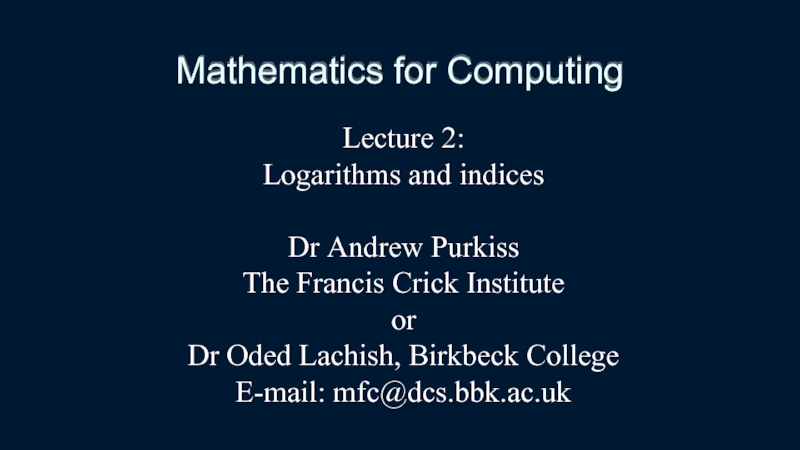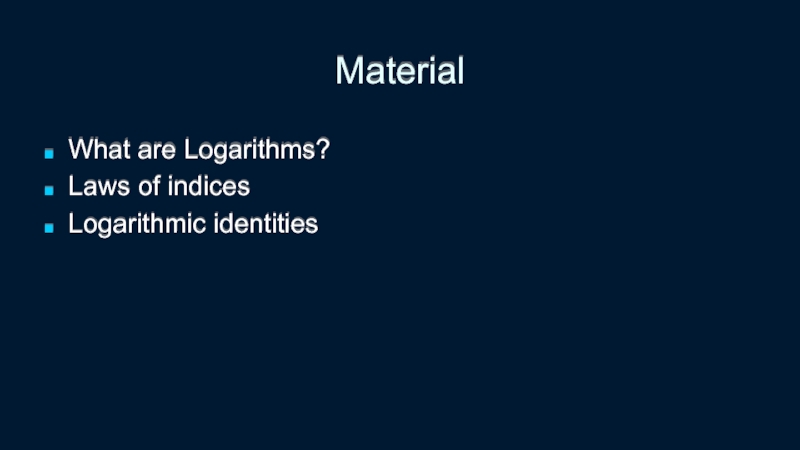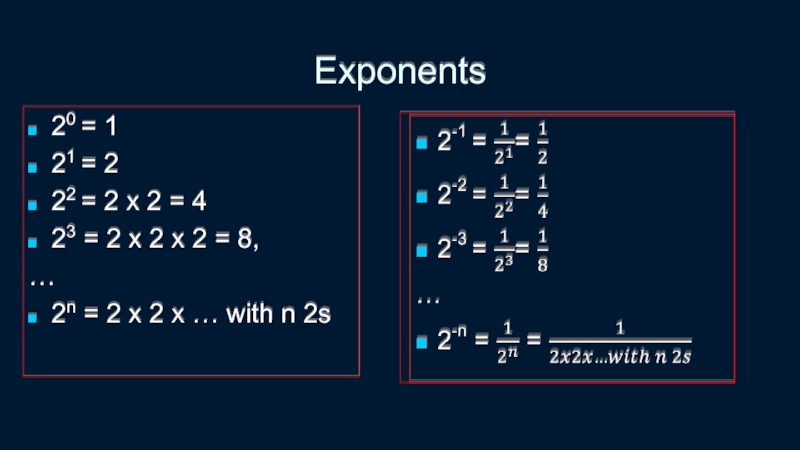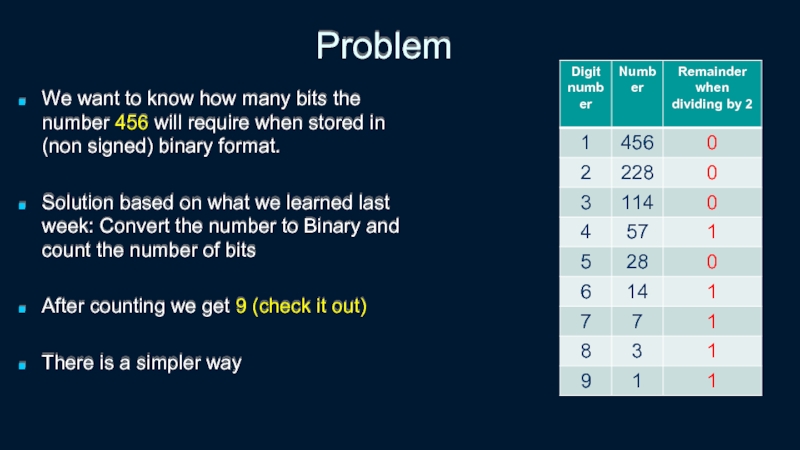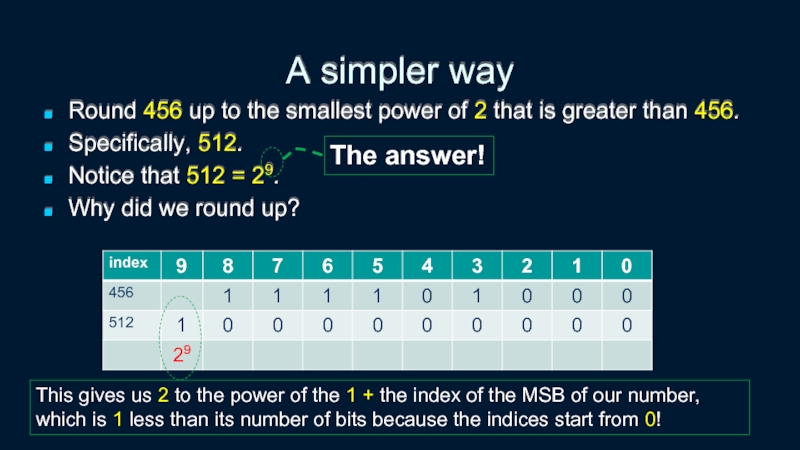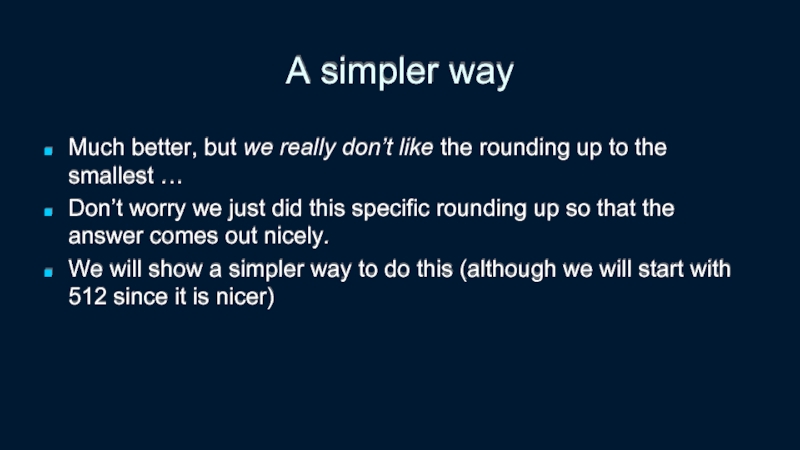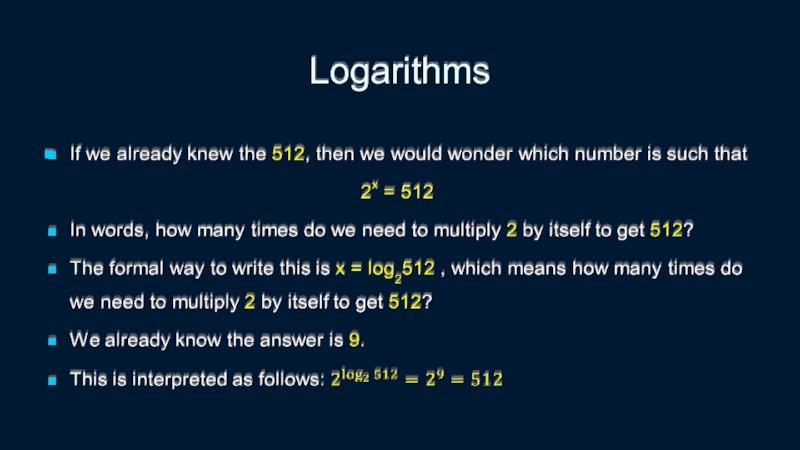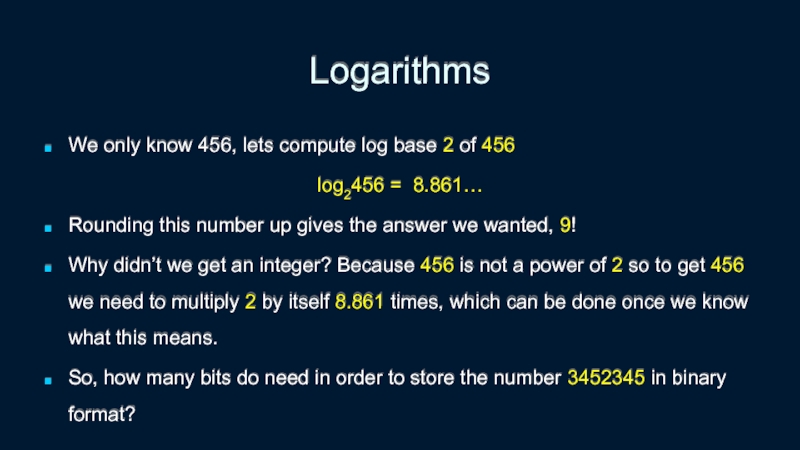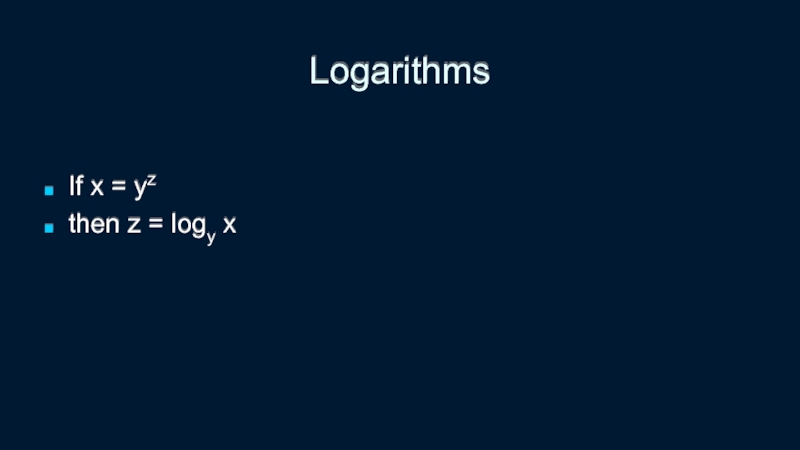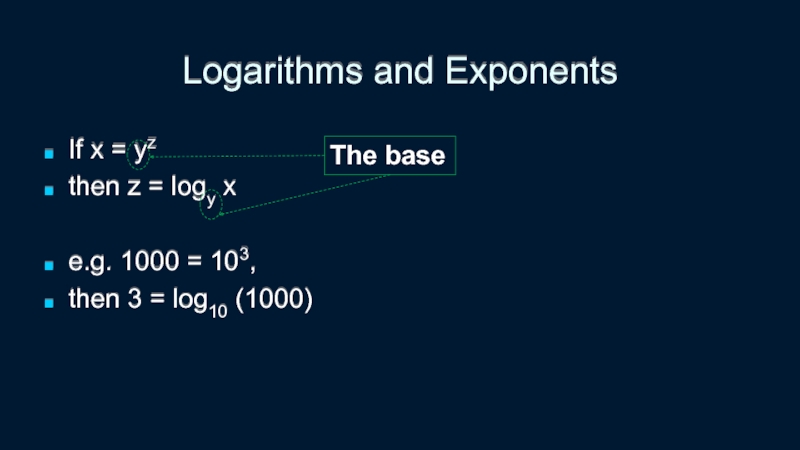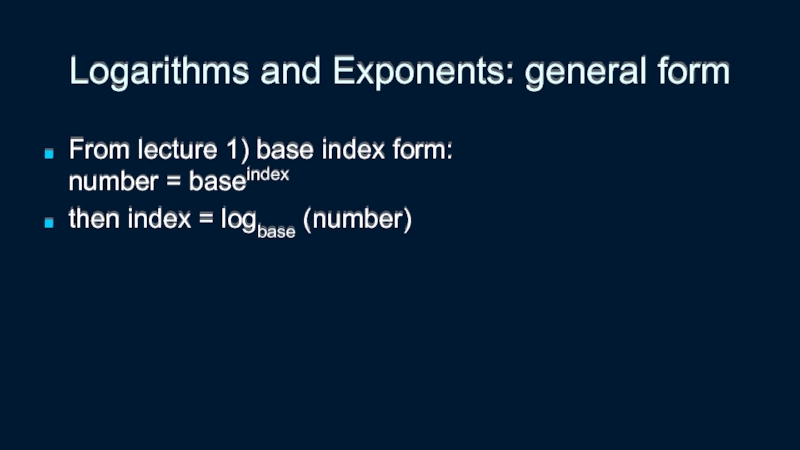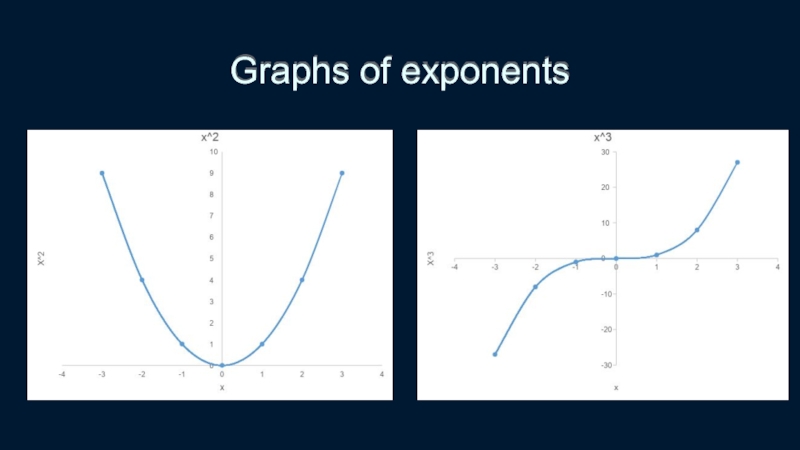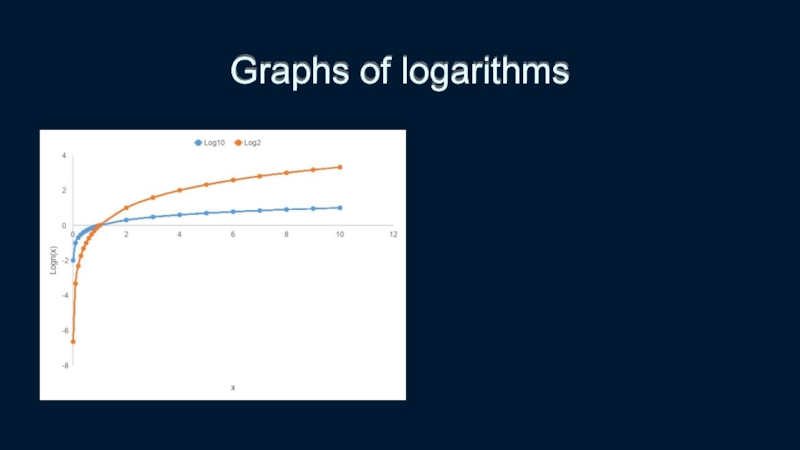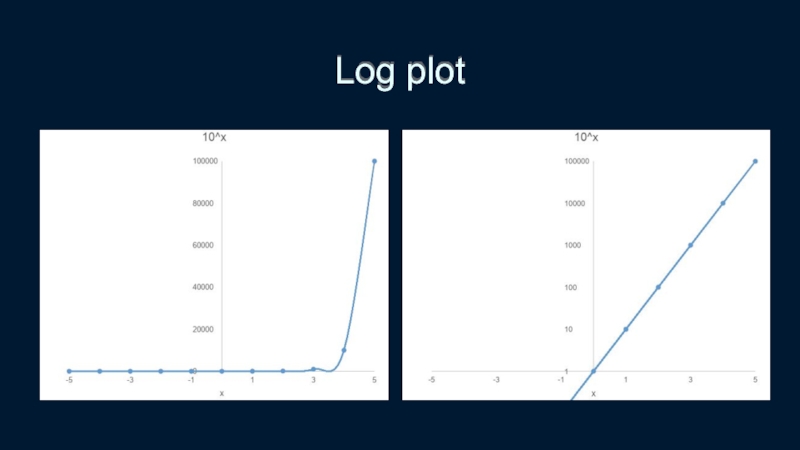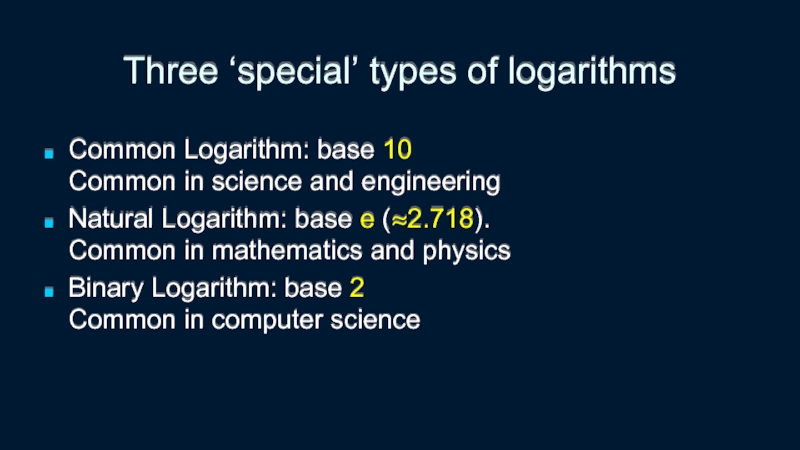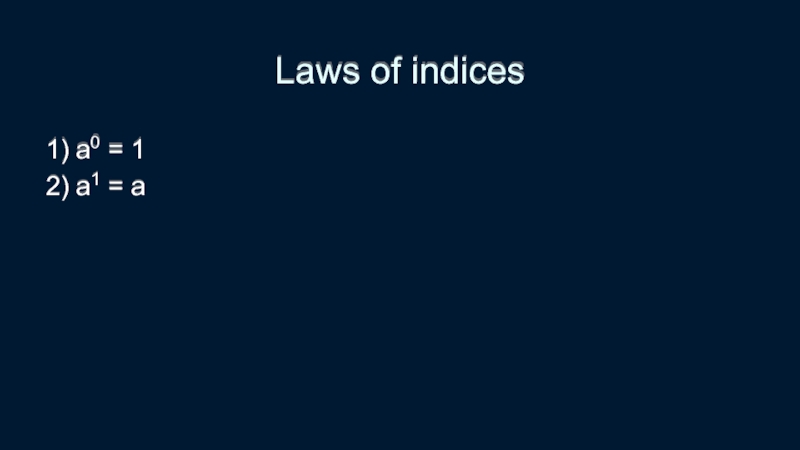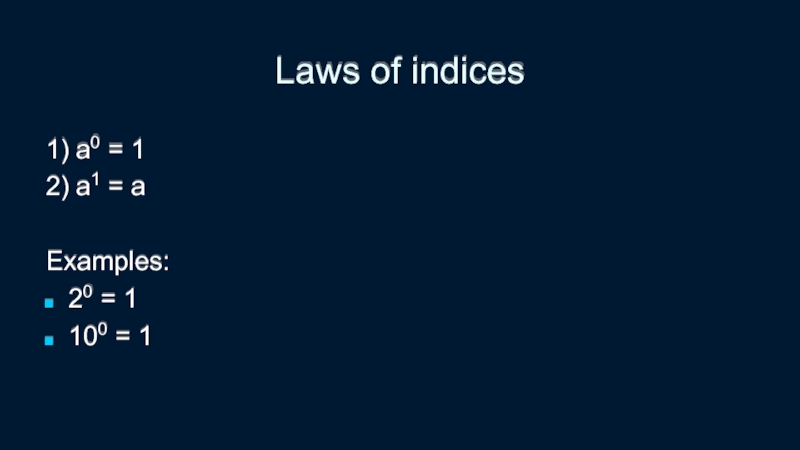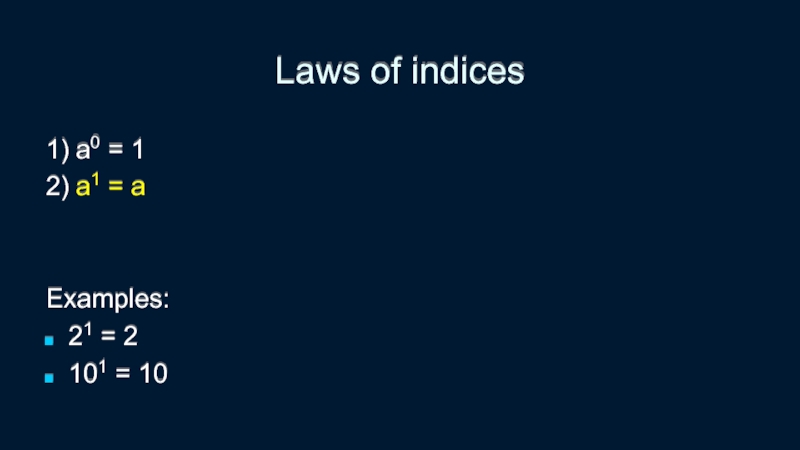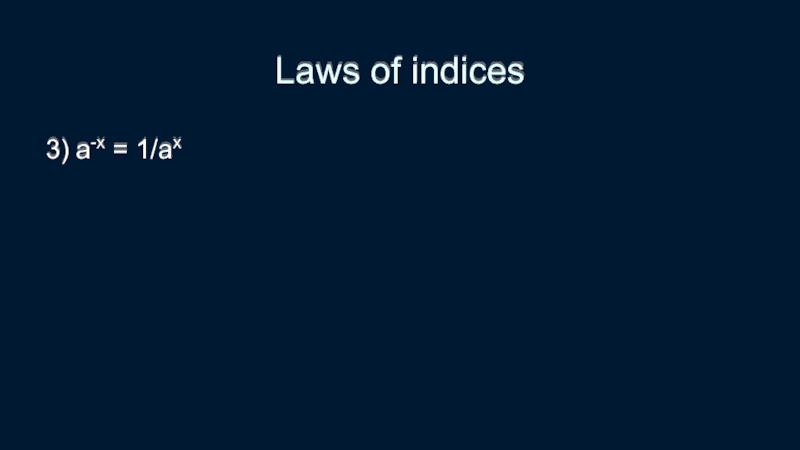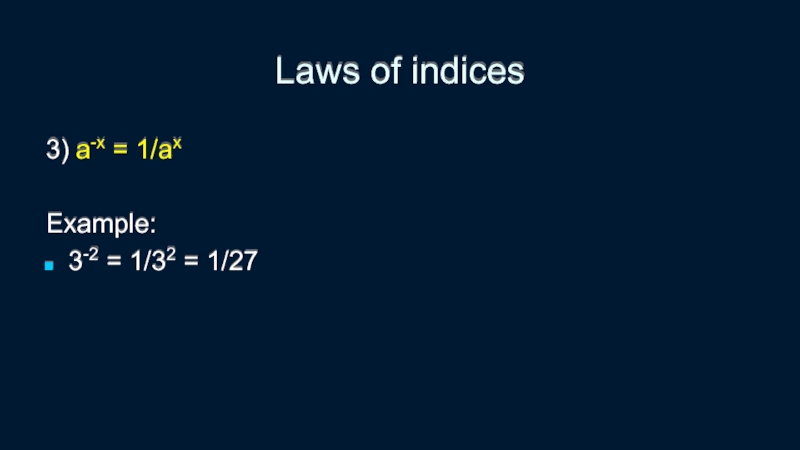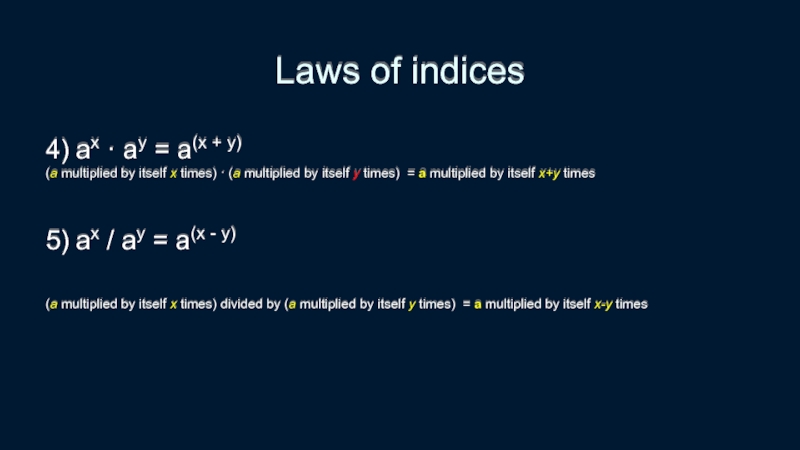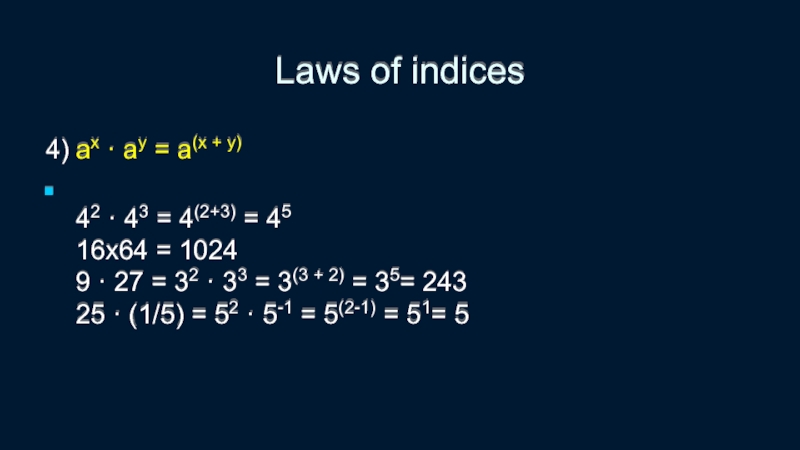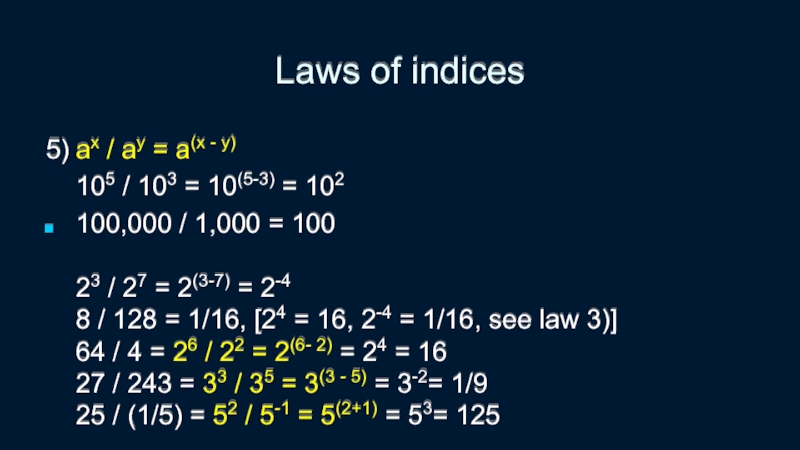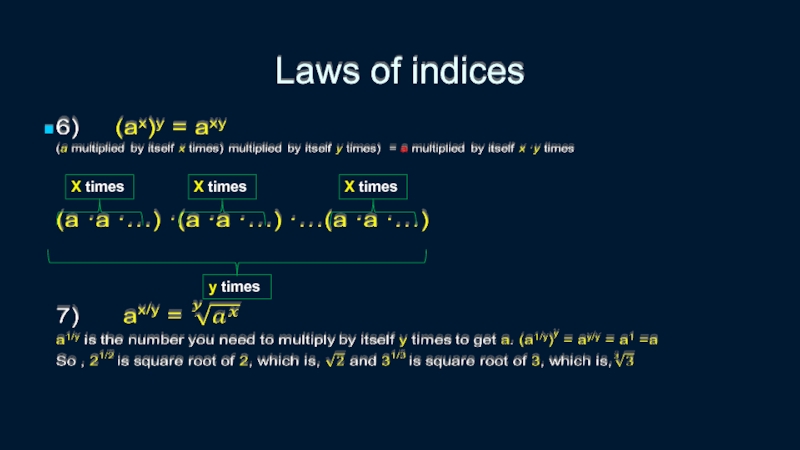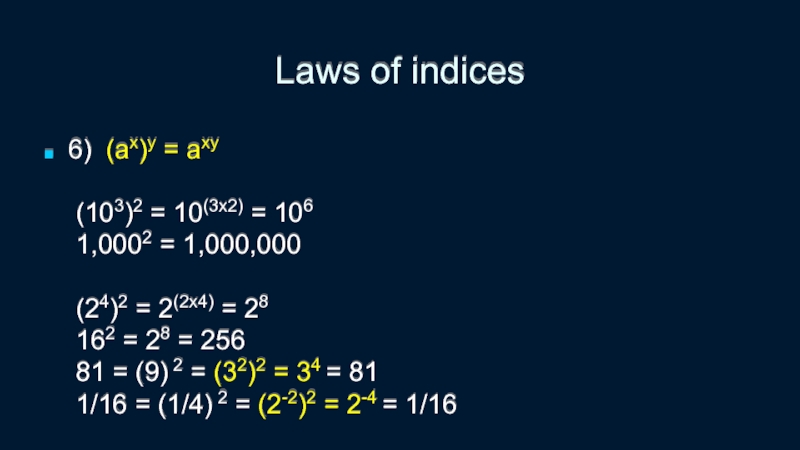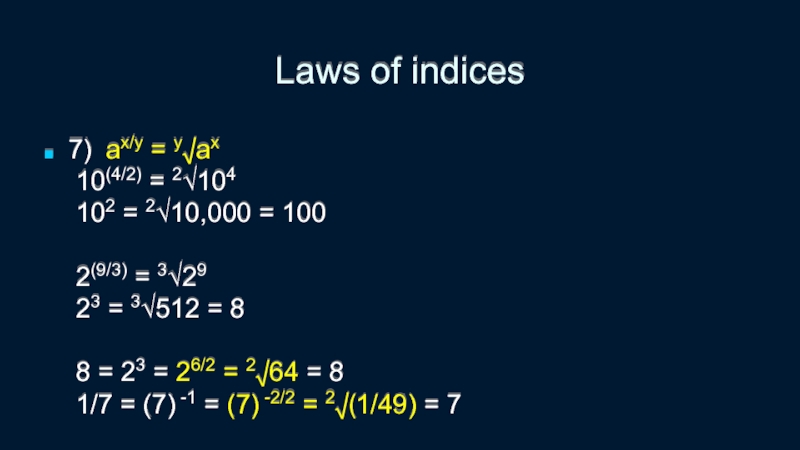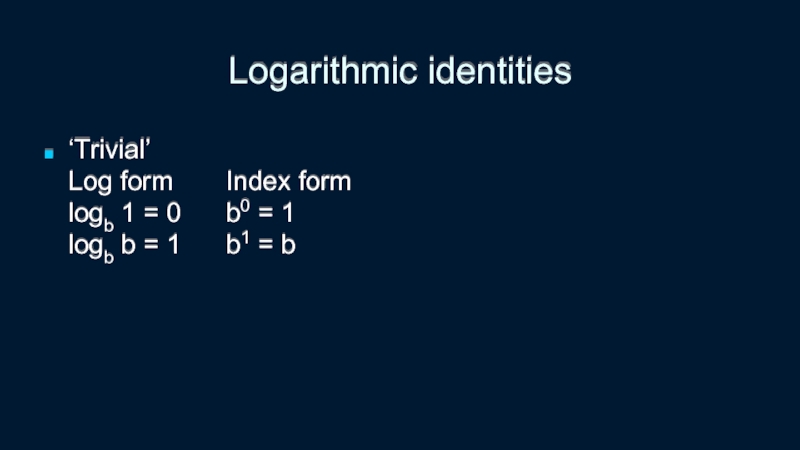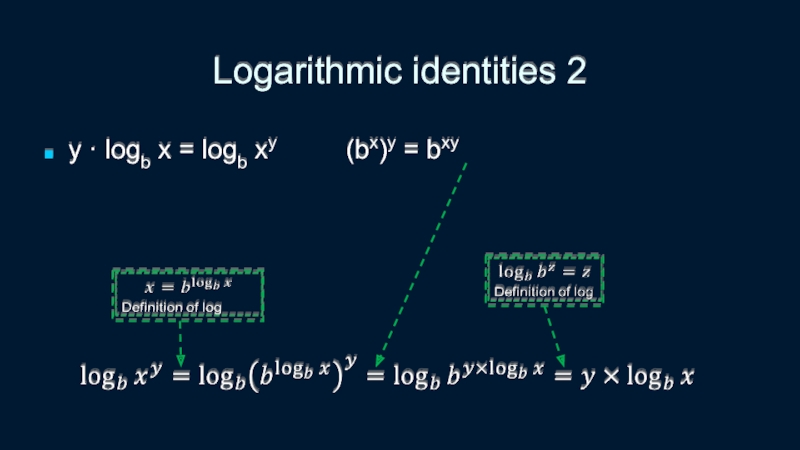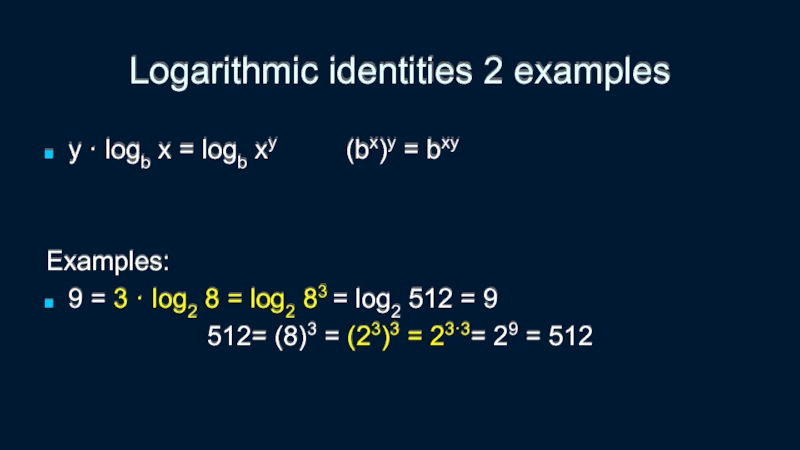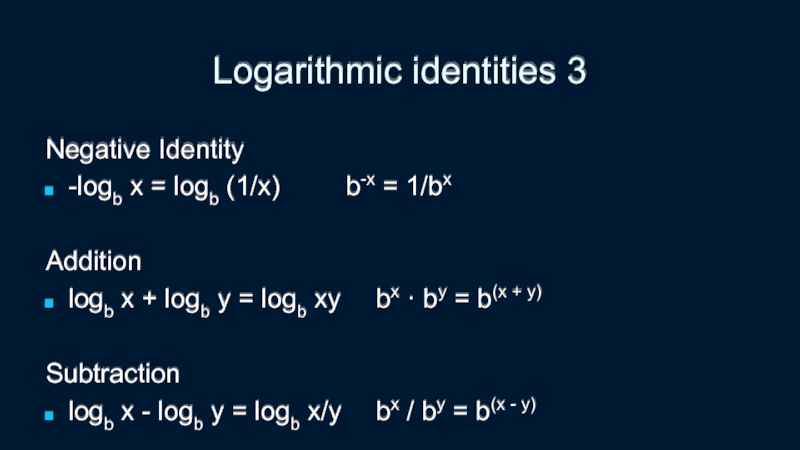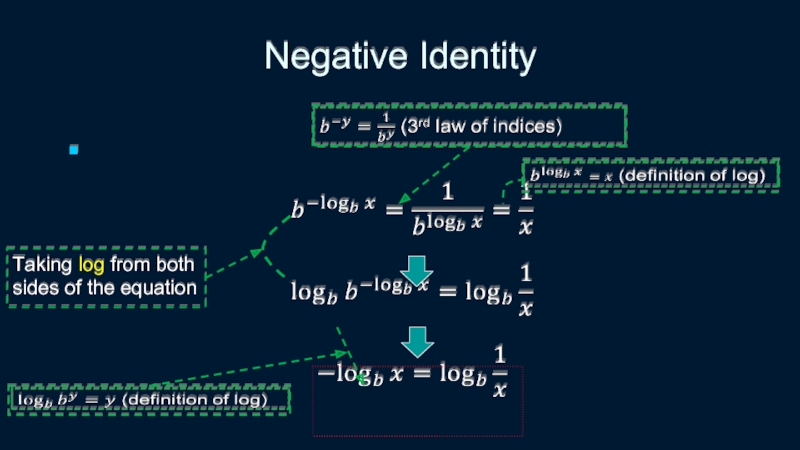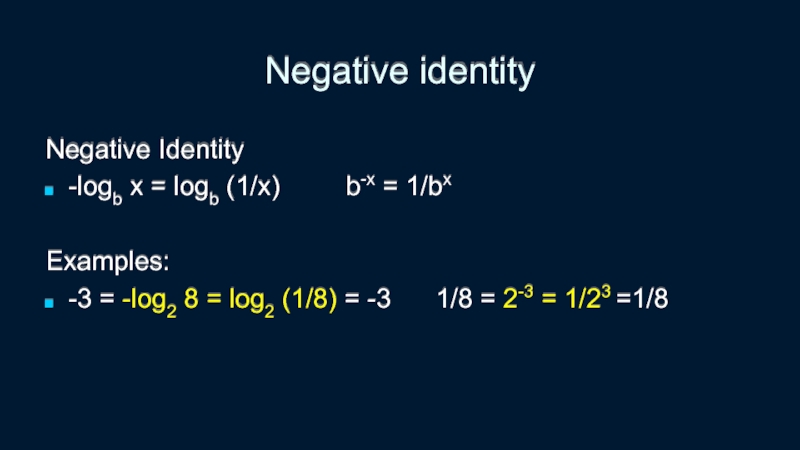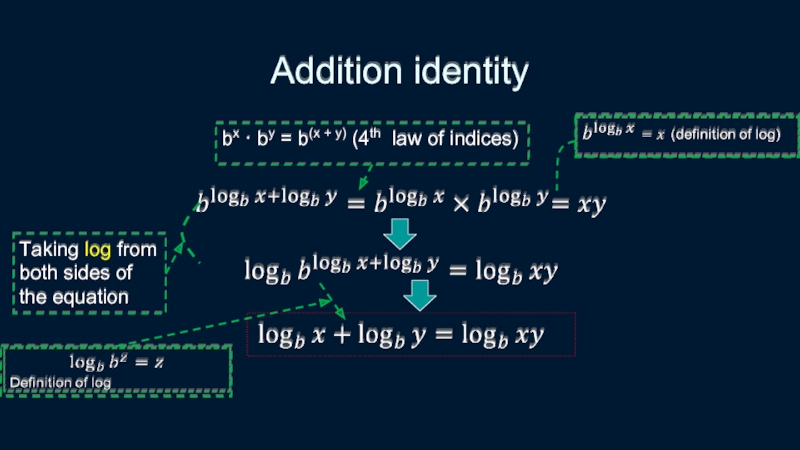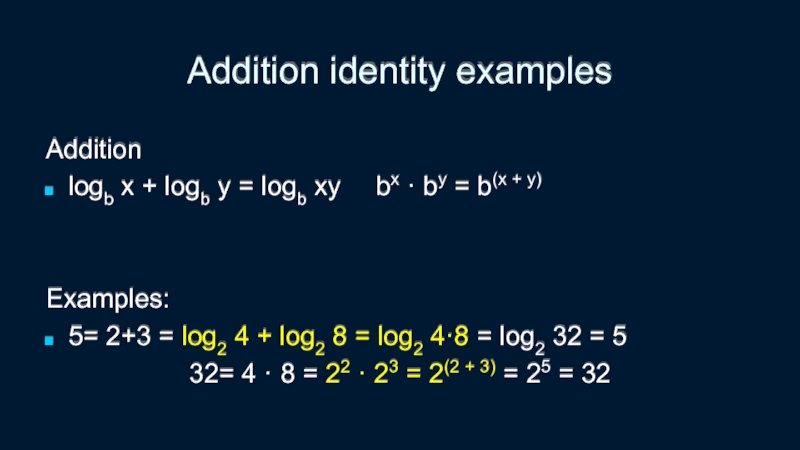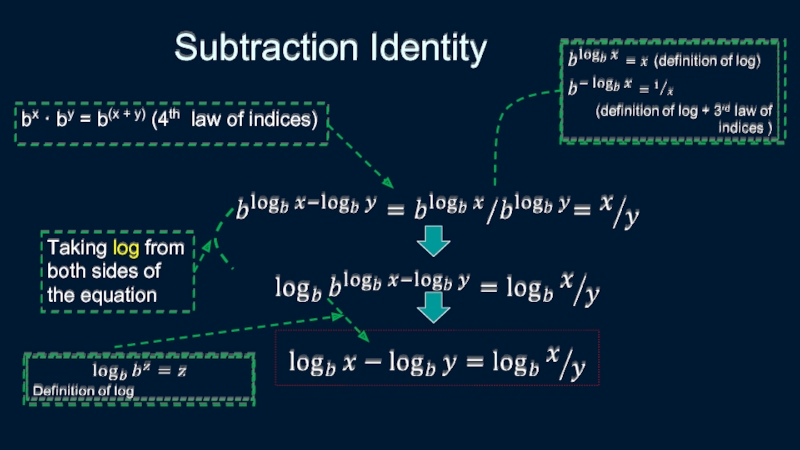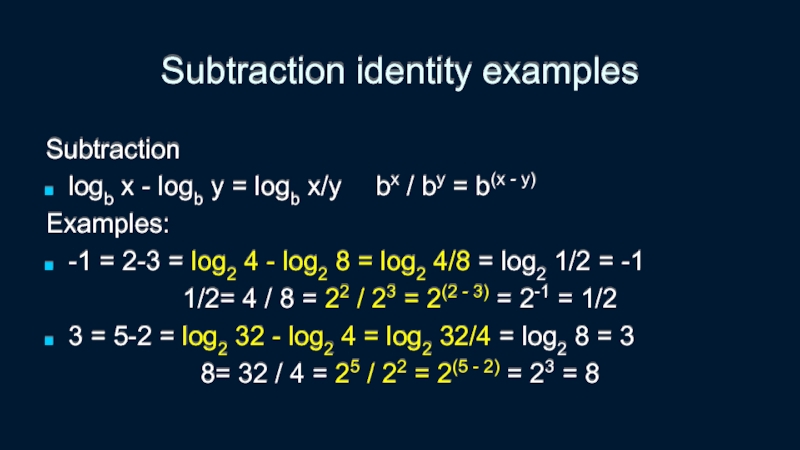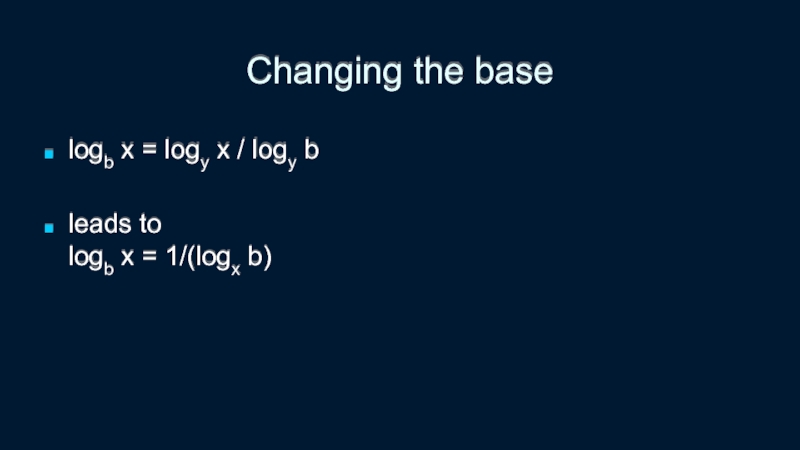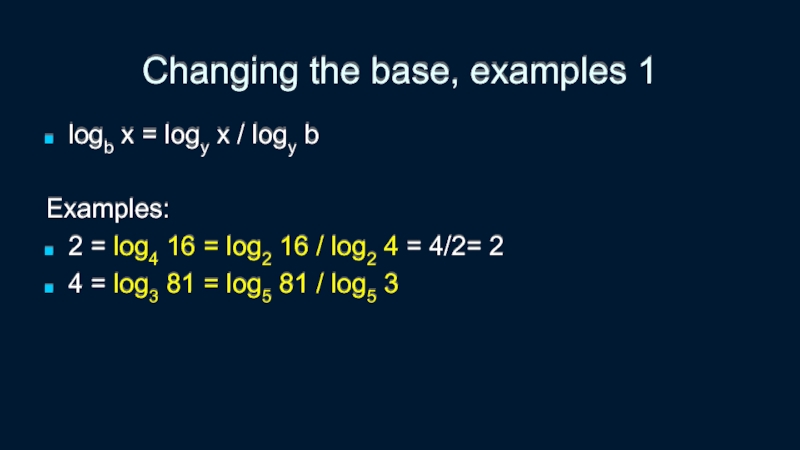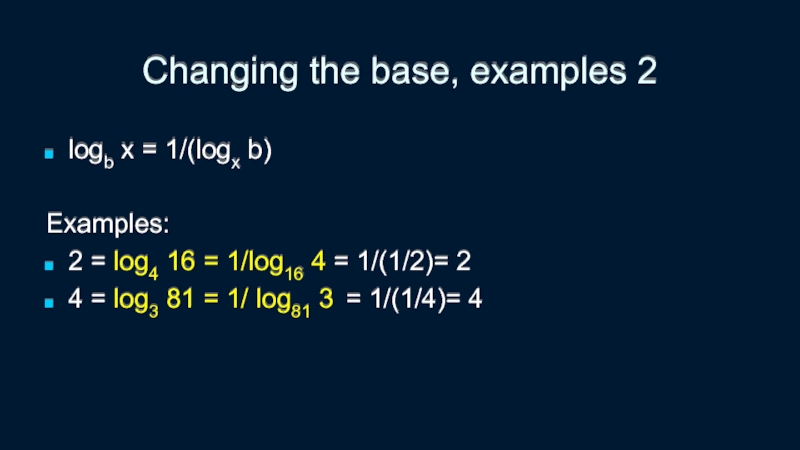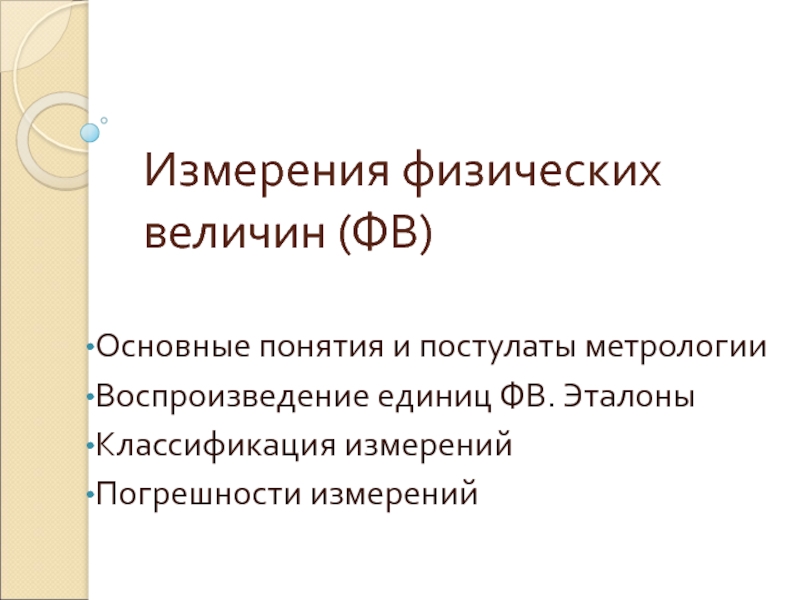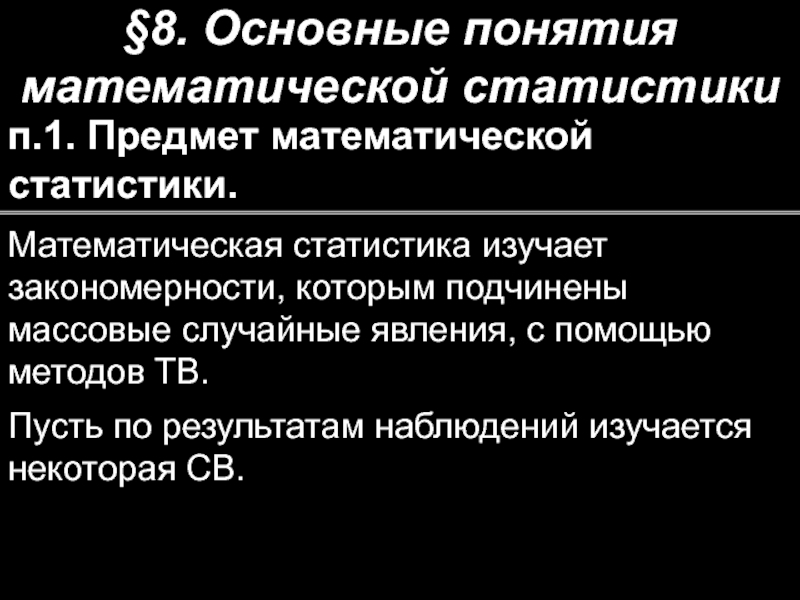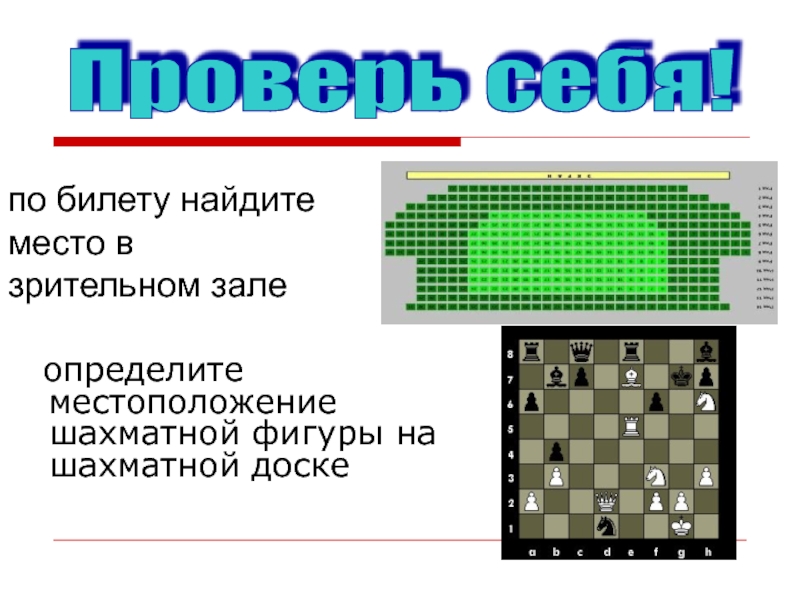- Главная
- Разное
- Дизайн
- Бизнес и предпринимательство
- Аналитика
- Образование
- Развлечения
- Красота и здоровье
- Финансы
- Государство
- Путешествия
- Спорт
- Недвижимость
- Армия
- Графика
- Культурология
- Еда и кулинария
- Лингвистика
- Английский язык
- Астрономия
- Алгебра
- Биология
- География
- Детские презентации
- Информатика
- История
- Литература
- Маркетинг
- Математика
- Медицина
- Менеджмент
- Музыка
- МХК
- Немецкий язык
- ОБЖ
- Обществознание
- Окружающий мир
- Педагогика
- Русский язык
- Технология
- Физика
- Философия
- Химия
- Шаблоны, картинки для презентаций
- Экология
- Экономика
- Юриспруденция
Mathematics for Computing. Lecture 2: Logarithms and indices презентация
Содержание
- 1. Mathematics for Computing. Lecture 2: Logarithms and indices
- 2. Material What are Logarithms? Laws of indices Logarithmic identities
- 3. Exponents 20 = 1 21 = 2
- 4. Problem We want to know how many
- 5. A simpler way Round 456 up to
- 6. A simpler way Much better, but we
- 7. Logarithms
- 8. Logarithms We only know 456, lets compute
- 9. Logarithms If x = yz then z = logy x
- 10. Logarithms and Exponents If x = yz
- 11. Logarithms and Exponents: general form From lecture
- 12. Graphs of exponents
- 13. Graphs of logarithms
- 14. Log plot
- 15. Three ‘special’ types of logarithms Common Logarithm:
- 16. Laws of indices 1) a0 = 1 2) a1 = a
- 17. Laws of indices 1) a0 = 1 2) a1
- 18. Laws of indices 1) a0 = 1 2) a1
- 19. Laws of indices 3) a-x = 1/ax
- 20. Laws of indices 3) a-x = 1/ax
- 21. Laws of indices 4) ax · ay =
- 22. Laws of indices 4) ax · ay =
- 23. Laws of indices 5) ax / ay =
- 24. Laws of indices X times
- 25. Laws of indices 6) (ax)y = axy
- 26. Laws of indices 7) ax/y = y√ax 10(4/2)
- 27. Logarithmic identities ‘Trivial’ Log form Index form logb
- 28. Logarithmic identities 2 y · logb x
- 29. Logarithmic identities 2 examples y · logb
- 30. Logarithmic identities 3 Negative Identity -logb x
- 31. Negative Identity
- 32. Negative identity Negative Identity -logb x =
- 33. Addition identity Taking log
- 34. Addition identity examples Addition logb x +
- 35. Subtraction Identity Taking log from
- 36. Subtraction identity examples Subtraction logb x -
- 37. Changing the base logb x = logy
- 38. Changing the base, examples 1 logb x
- 39. Changing the base, examples 2 logb x
Слайд 1Mathematics for Computing
Lecture 2:
Logarithms and indices
Dr Andrew Purkiss
The Francis Crick Institute
or
Dr
E-mail: mfc@dcs.bbk.ac.uk
Слайд 4Problem
We want to know how many bits the number 456 will
Solution based on what we learned last week: Convert the number to Binary and count the number of bits
After counting we get 9 (check it out)
There is a simpler way
Слайд 5A simpler way
Round 456 up to the smallest power of 2
Specifically, 512.
Notice that 512 = 29.
Why did we round up?
The answer!
This gives us 2 to the power of the 1 + the index of the MSB of our number, which is 1 less than its number of bits because the indices start from 0!
Слайд 6A simpler way
Much better, but we really don’t like the rounding
Don’t worry we just did this specific rounding up so that the answer comes out nicely.
We will show a simpler way to do this (although we will start with 512 since it is nicer)
Слайд 8Logarithms
We only know 456, lets compute log base 2 of 456
log2456
Rounding this number up gives the answer we wanted, 9!
Why didn’t we get an integer? Because 456 is not a power of 2 so to get 456 we need to multiply 2 by itself 8.861 times, which can be done once we know what this means.
So, how many bits do need in order to store the number 3452345 in binary format?
Слайд 10Logarithms and Exponents
If x = yz
then z = logy x
e.g. 1000
then 3 = log10 (1000)
The base
Слайд 11Logarithms and Exponents: general form
From lecture 1) base index form:
number =
then index = logbase (number)
Слайд 15Three ‘special’ types of logarithms
Common Logarithm: base 10
Common in science
Natural Logarithm: base e (≈2.718). Common in mathematics and physics
Binary Logarithm: base 2 Common in computer science
Слайд 21Laws of indices
4) ax · ay = a(x + y)
(a multiplied by
5) ax / ay = a(x - y)
(a multiplied by itself x times) divided by (a multiplied by itself y times) = a multiplied by itself x-y times
Слайд 22Laws of indices
4) ax · ay = a(x + y)
42 · 43
Слайд 23Laws of indices
5) ax / ay = a(x - y)
105 / 103
100,000 / 1,000 = 100 23 / 27 = 2(3-7) = 2-4 8 / 128 = 1/16, [24 = 16, 2-4 = 1/16, see law 3)] 64 / 4 = 26 / 22 = 2(6- 2) = 24 = 16 27 / 243 = 33 / 35 = 3(3 - 5) = 3-2= 1/9 25 / (1/5) = 52 / 5-1 = 5(2+1) = 53= 125
Слайд 25Laws of indices
6) (ax)y = axy
(103)2 = 10(3x2) = 106
1,0002 = 1,000,000
(24)2
Слайд 26Laws of indices
7) ax/y = y√ax
10(4/2) = 2√104
102 = 2√10,000 = 100
2(9/3)
Слайд 29Logarithmic identities 2 examples
y · logb x = logb xy (bx)y =
Examples:
9 = 3 · log2 8 = log2 83 = log2 512 = 9
512= (8)3 = (23)3 = 23·3= 29 = 512
Слайд 30Logarithmic identities 3
Negative Identity
-logb x = logb (1/x) b-x = 1/bx
Addition
logb
Subtraction
logb x - logb y = logb x/y bx / by = b(x - y)
Слайд 32Negative identity
Negative Identity
-logb x = logb (1/x) b-x = 1/bx
Examples:
-3 =
Слайд 33Addition identity
Taking log from both sides of the equation
bx · by
Слайд 34Addition identity examples
Addition
logb x + logb y = logb xy bx ·
Examples:
5= 2+3 = log2 4 + log2 8 = log2 4·8 = log2 32 = 5
32= 4 · 8 = 22 · 23 = 2(2 + 3) = 25 = 32
Слайд 35Subtraction Identity
Taking log from both sides of the equation
bx · by
Слайд 36Subtraction identity examples
Subtraction
logb x - logb y = logb x/y bx /
Examples:
-1 = 2-3 = log2 4 - log2 8 = log2 4/8 = log2 1/2 = -1
1/2= 4 / 8 = 22 / 23 = 2(2 - 3) = 2-1 = 1/2
3 = 5-2 = log2 32 - log2 4 = log2 32/4 = log2 8 = 3
8= 32 / 4 = 25 / 22 = 2(5 - 2) = 23 = 8
Слайд 38Changing the base, examples 1
logb x = logy x / logy
Examples:
2 = log4 16 = log2 16 / log2 4 = 4/2= 2
4 = log3 81 = log5 81 / log5 3
Слайд 39Changing the base, examples 2
logb x = 1/(logx b)
Examples:
2 = log4
4 = log3 81 = 1/ log81 3 = 1/(1/4)= 4
